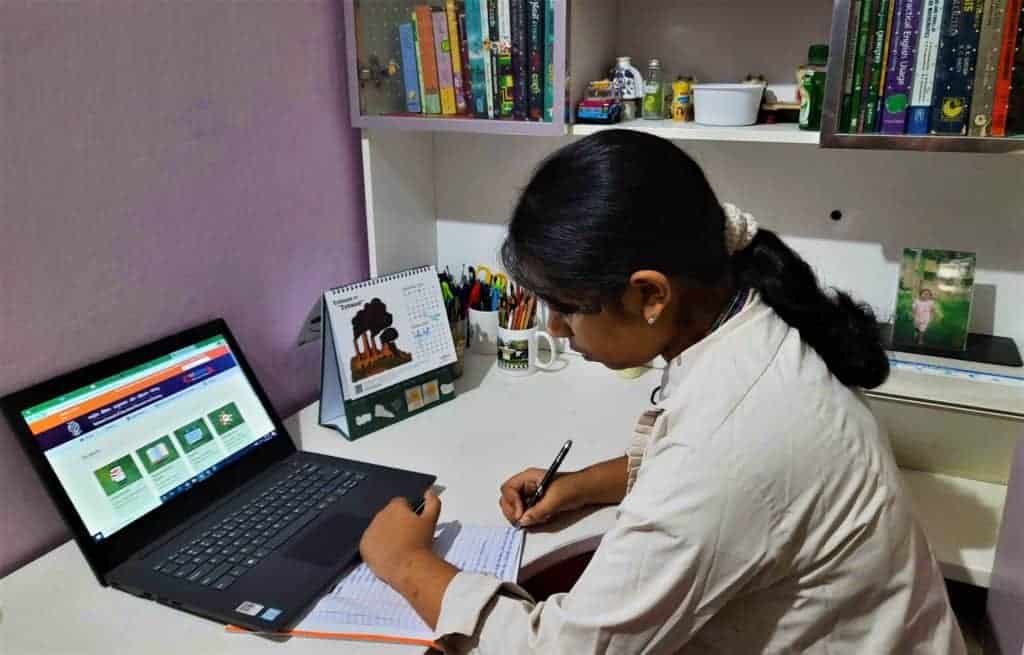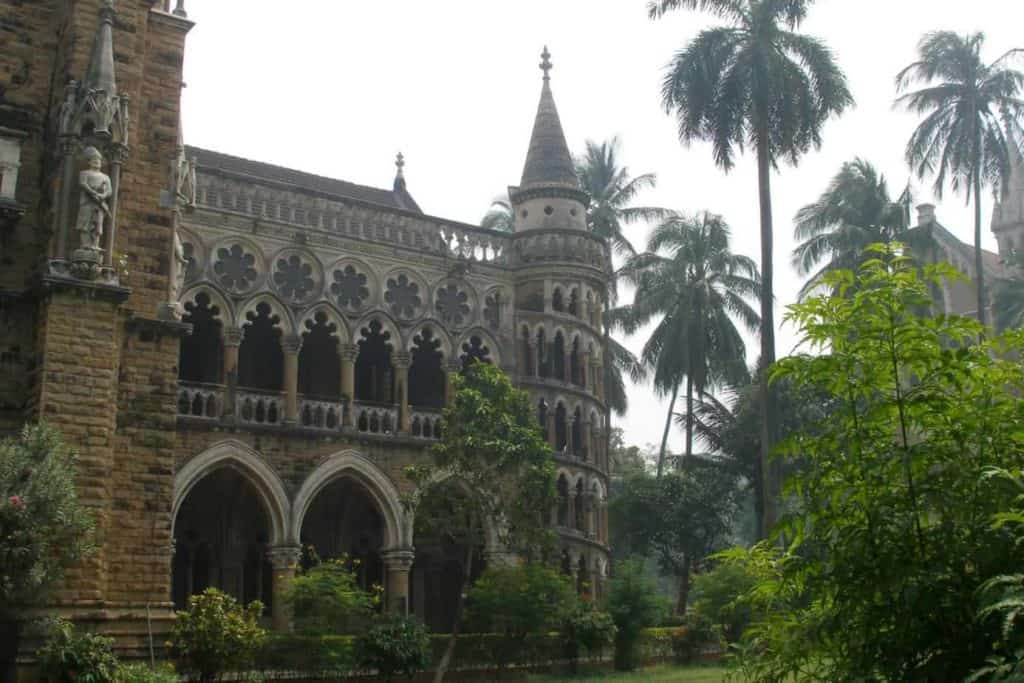Stressed out with having to chase that perfect 100% in her 12th class board exams in a few days “to get into the best colleges of Delhi,” Mrinalini, a student of a private school in Ghaziabad, would like nothing better than to give this “chase” a miss. Which she now can, following the recent announcement by the University Grants Commission (UGC) that the performance in the newly introduced Common University Entrance Test (CUET), not the board exam, will decide the college in which she gets admission.
Especially after seven Delhi University colleges had reportedly set 100% marks in the 12th board exam for admission in the first list for 10 programmes that include BA (hons) in economics, political science and psychology, and B Com (honours).
The CUET, to be conducted by the National Testing Agency (NTA), will now be mandatory for admission to undergraduate courses in the 45 Central universities across the country. These include some of the best known Indian universities: Delhi University, JNU, Jamia Millia Islamia, Indira Gandhi National Open University, Benares Hindu University, Vishwa Bharati University (better known as Shantiniketan), University of Allahabad and Aligarh Muslim University, to name a few. Where fees are a miniscule fraction of what private colleges and deemed universities charge.
The process
The registration process for CUET 2022 for students began on April 6th and will go on till 5 pm on May 6th. The tests will be held in July, though the schedule has yet to be announced. Broadly, the CUET will comprise language tests, domain tests and general tests. The UGC meanwhile is conducting webinars to familiarise students and institutions with the format of the CUET, which may over the next few years become the standard for admission to all colleges and universities.
The UGC appears to have opted for the CUET primarily to standardise the performance of students who had taken the 12th examinations conducted by different education boards with varying syllabus, standards, examinations and evaluation, among other things. This had become necessary given the reality that students who topped the Central Board of Secondary Education (CBSE) somehow also topped most entrance tests and made it to the best colleges.
Read more: Younger generations may pay dearly for the learning loss from two years of school closure
The jury is out
But even as the NTA published the details of the exam, the idea of CUET drew mixed reactions.
Dr Yogesh Singh, vice-chancellor Delhi University is all for CUET, as is Jamia Millia. Ambedkar University, Delhi, (AUD) a state university established by the Government of the National Capital Territory (NCT) also decided to admit students to undergrad programmes based on the CUET scores. “We decided to go with the CUET system, as we believe that students must have a single window similar to Joint Entrance Examination (JEE), the National Eligibility Entrance Test (NEET) etc”, said AUD vice-chancellor Anu Singh Lather.
But Delhi’s prestigious Stephen’s College, where the cut off percentage for admission ranges between 99 and 100%, cited its status as a minority institution and said that it would give 85% weightage to CUET scores and 15% will be based on its interviews, both for general category students and Christian students, for whom half the seats are reserved.

It was a different scene in the south. Tamil Nadu, on April 11th, became the first state to vociferously demand that the new test for admissions to central universities be withdrawn. The state legislature even passed a resolution which, among other things, said the exam would not “provide an equal opportunity to all students who have studied in varied state board syllabi across the country”.
Does CUET put some at a disadvantage?
Tamil Nadu’s resolution touches upon concerns that students, teachers, parents and indeed many other state governments have. As of now, each state government has its own state school education boards, each with their distinct syllabus. The reality is that the varying standards of the different boards that universities — in this case UGC-funded Central universities — had to reconcile with, at the time of admissions, used to be a nightmare.
In most states, their respective state board syllabus constitutes more than 80% of the total student population, and these students invariably hail from the marginalised sections. Critics of CUET argue that an NCERT syllabus-based entrance examination would place this deserving majority in a disadvantageous position in securing admission in central universities.
In Tamil Nadu’s context, the assembly felt this would drastically reduce the number of students from the state in various central universities and affiliated colleges. “CUET, like NEET, will sideline the diverse school education systems across the country and grossly undermine the relevance of overall development-oriented long-form learning in schools, making students rely on coaching centres to improve their entrance examination scores,” the resolution said.
Read more: As colleges embrace virtual education, how are professors and students coping?
Then again, take the Punjab School Education Board (PSEB). “The fact is 99.9 % of the syllabus in PSEB is identical to that of CBSE,” says Ritu Pushkarna, Principal of Mohali-based Meritorious School under the PSEB. “The difference would be in social studies where parts of the syllabus pertain to Punjab, and this particular region. Or literature, which though seems to be like pure Hindi of the Mahadevi Varma, Munshi Prem Chand kind, are more about Gurbani, Sakhi, Kabir. Maths and sciences syllabi are 100% the same as CBSE”.
One of Ritu’s colleagues in an Army school who had taught at an Uttar Pradesh school education board school, felt that the UP board syllabus was tougher than CBSE, and the evaluation more strict. “Almost every state school education board has standards identical to the CBSE because students are aspiring for that,” she said.
Ritu, who has also worked with the CBSE, welcomes the idea of standardisation, the main feature of CUET. She had spent over a lakh of rupees in 2015 when her son took 10 entrance tests for admissions, cracked eight and chose one. “A test like the CUET makes economic sense, for parents and government,” adds Ritu. “The government pays for one test, and children become eligible based on the score of that one test”.

CUET also gives students the flexibility to take subjects they want to pursue in college which are different from what they did in school. They can also choose the domain tests and the same applies for languages tests.
The arguments for CUET
As a school principal, Ritu is clear that the CUET will not affect students’ interest to do very well in the 12th Boards. “It is the preparation for these that will give the students in depth knowledge of subjects, the thorough knowledge that is required to attempt and fare well in any entrance test including CUET.”
The country’s largest education industry — the coaching centres — began advertising their coaching for the CUET from the very day the government announced it. And there is the possibility of a huge rush given the short window for preparation. A teacher of a government school in Delhi however said most school board exams have 20% marks for objective type questions, which call for speed besides in depth knowledge of the subject, while coaching centres focus primarily on speed and time management at entrance tests.
For now. the UGC is not moved by any anti-CUET arguments. In fact, the CUET is gaining acceptance among those in the business of higher education. UGC Chairman Jagadesh Kumar said that eight deemed-to-be universities, including the Tata Institute of Social Sciences (TISS), want to use the CUET score for admission to their undergraduate courses.
Vice-chancellors of 25 state universities from Karnataka also met with the UGC chairman, wanting to use the CUET for admission to their undergraduate programmes.
In fact, Jagadesh Kumar has received requests from many urging him to replace all other entrance tests — for engineering, architecture, medicine etc — with CUET, as “simply filling up the forms for so many UG entrance tests is expensive and time consuming,” tweeted @Nagarik8.
The UGC has also made it clear that existing reservation policies of these institutes will not be affected. The only difference being the admission will be based on CUET scores.
The UGC chairman tweeted that universities do not have to sign any MoU with the NTA or UGC, nor make any payment, they only need to register on the NTA website. When students submit their CUET scores during admission, universities can verify them against NTA data.